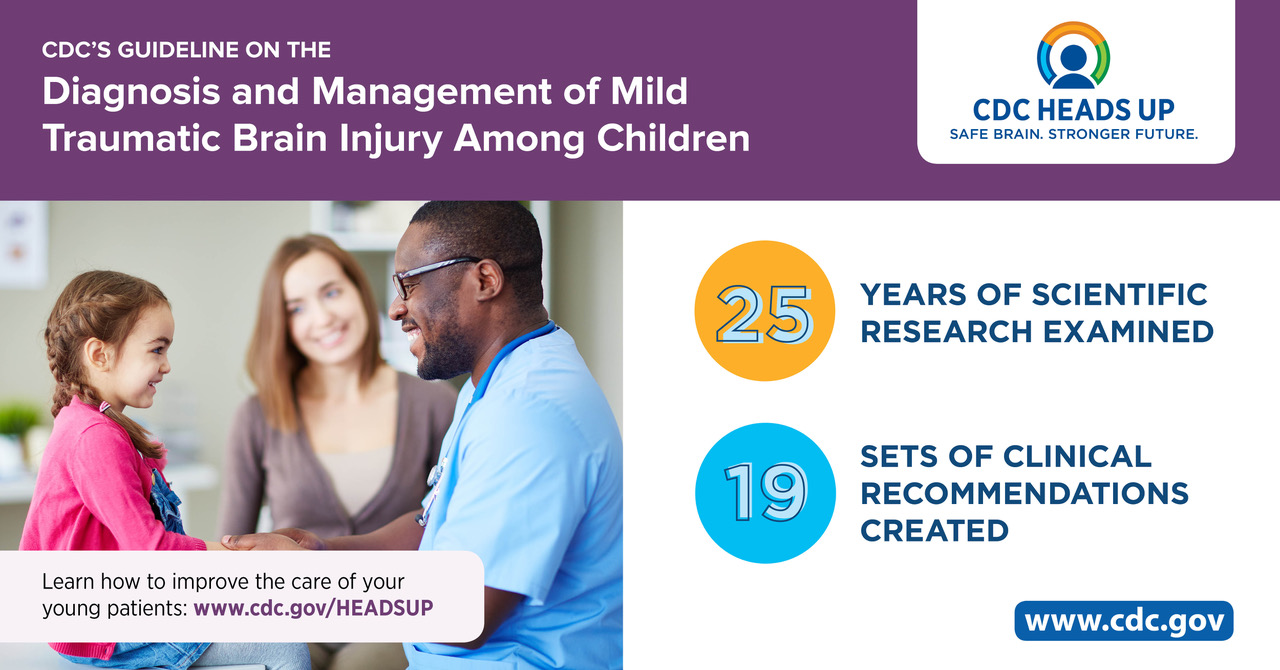- Do not routinely image patients to diagnose Pediatric Mild Traumatic Brain Injury (mTBI).
- Use validated, age-appropriate symptom scales to diagnose mTBI.
- Assess evidence-based risk factors for prolonged recovery.
- Provide patients with instructions on return to activity customized to their symptoms.
- Counsel patients to return gradually to non-sports activities after no more than 1 to 2 days of rest.
Guiding principles

Take action to improve the care of children with mTBI
The goal of the CDC Pediatric mTBI Guideline is to help healthcare providers take action to improve the health of their patients. The CDC Pediatric mTBI Guideline consists of 19 sets of clinical recommendations that cover diagnosis, prognosis, and management and treatment. These recommendations are for healthcare providers working in: inpatient, emergency, primary, and outpatient care settings.
The CDC Pediatric mTBI Guideline was developed through a rigorous process guided by the American Academy of Neurology and 2010 National Academy of Sciences methodologies. An extensive review of scientific literature, spanning 25 years of research, formed the basis of the Guideline.
Overview
Key Recommendations from the CDC Pediatric mTBI Guideline:
1. Do not routinely image patients to diagnose mTBI.
2. Use validated, age-appropriate symptom scales to diagnose mTBI.
3. Assess evidence-based risk factors for prolonged recovery.
4. Provide patients with instructions on return to activity customized to their symptoms.
5. Counsel patients to return gradually to non-sports activities after no more than 1 to 2 days of rest.
Content Source:
National Center for Injury Prevention and Control
link

